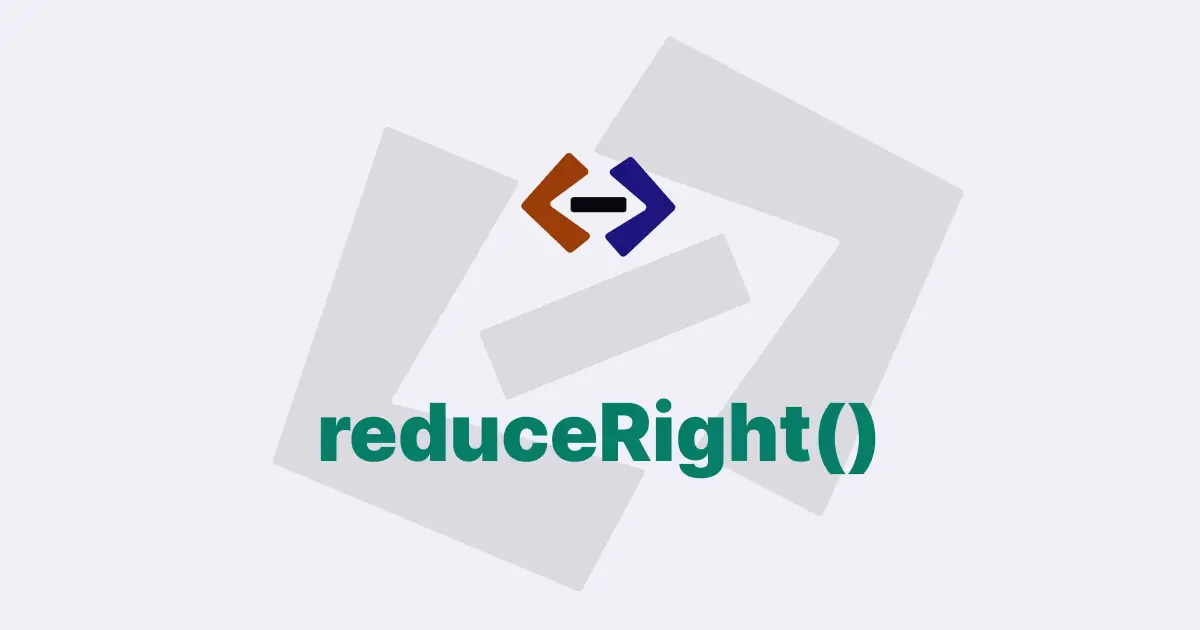The reduce() method in Javascript is a powerful higher-order array method that allows you to iterate over the elements of an array and accumulate their values into a single result.
It is commonly used for various tasks such as summing up values, finding the maximum or minimum value, or concatenating strings in an array.
Syntax for the reduce() method:
The syntax of the reduce() method is:
array.reduce(callback[, initialValue])The callback parameter is a function that you provide as an argument to reduce(). It gets executed on each element of the array and takes four arguments: accumulator, currentValue, currentIndex, and array.
-
accumulator: This is the value that gets accumulated during the iteration process. It is the result of the previous iteration or the
initialValueif provided. In subsequent iterations, the value ofaccumulatoris updated based on the logic defined in thecallbackfunction. At the end of the iteration, the final value ofaccumulatoris returned as the result of thereduce()method. -
currentValue: This is the current element being processed in the array during each iteration. The
callbackfunction can perform operations on this value and use it to update theaccumulatorfor the next iteration. -
currentIndex: This is the index of the current element being processed in the array during each iteration. It starts from 0 for the first element and increments by 1 for each subsequent element.
-
array:
This is the array on which the
reduce()method was called. Thecallbackfunction operates on this array to iterate over its elements and accumulate the values into the accumulator.
The initialValue parameter is an optional parameter that you can provide to reduce().
If you provide an initial value, it will be used as the starting value for accumulator in the first iteration.
If you do not provide an initial value, the first element of the array will be used as the initial value and the iteration will start from the second element.
Here are some example of usage of reduce() method:
1. Summing up values in an array:
const numbers = [1, 2, 3, 4, 5];
const sum = numbers.reduce((accumulator, currentValue) => {
return accumulator + currentValue;
}, 0);
console.log(sum); // Output: 15In this example, we have an array of numbers. The reduce() method is used to iterate over the array and accumulate the values into the accumulator. The callback function takes two parameters, accumulator and currentValue, and returns their sum. The initial value of accumulator is set to 0 using the initialValue parameter.
2. Finding the maximum value in an array:
const numbers = [10, 5, 8, 21, 3];
const max = numbers.reduce((accumulator, currentValue) => {
return Math.max(accumulator, currentValue);
}, -Infinity);
console.log(max); // Output: 21In this example, we have an array of numbers. The reduce() method is used to iterate over the array and find the maximum value. The callback function uses the Math.max() function to compare the accumulator and currentValue and returns the maximum value. The initial value of accumulator is set to -Infinity using the initialValue parameter to ensure that any value in the array will be greater than the initial value.
3. Concatenating strings in an array:
const words = ["Hello", "world", "how", "are", "you"];
const sentence = words.reduce((accumulator, currentValue) => {
return accumulator + " " + currentValue;
}, "");
console.log(sentence); // Output: "Hello world how are you"In this example, we have an array of words. The reduce() method is used to iterate over the array and concatenate the words into a sentence. The callback function appends a space followed by the currentValue to the accumulator to create the sentence. The initial value of accumulator is set to an empty string ("") using the initialValue parameter.
It’s important to note that the reduce() method can be used for a wide range of tasks beyond simple summing, finding maximum or minimum values, or concatenating strings.
With the flexibility of the callback function, you can perform complex calculations, data transformations, or custom aggregations on an array of values.
Thank you for reading, and let’s have conversation with each other
Thank you for reading my article. Let’s have conversation on Twitter and LinkedIn by connecting.


